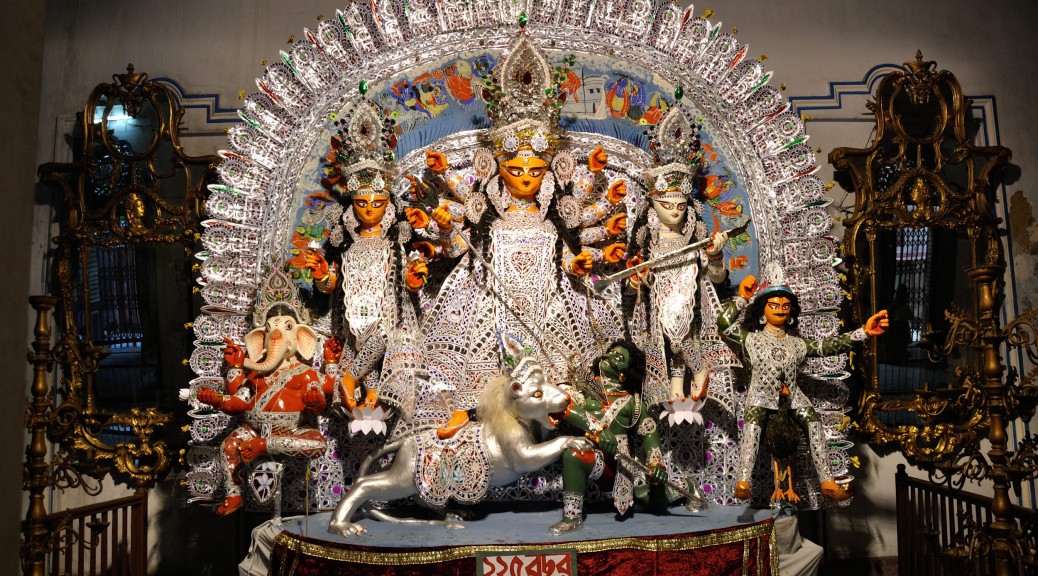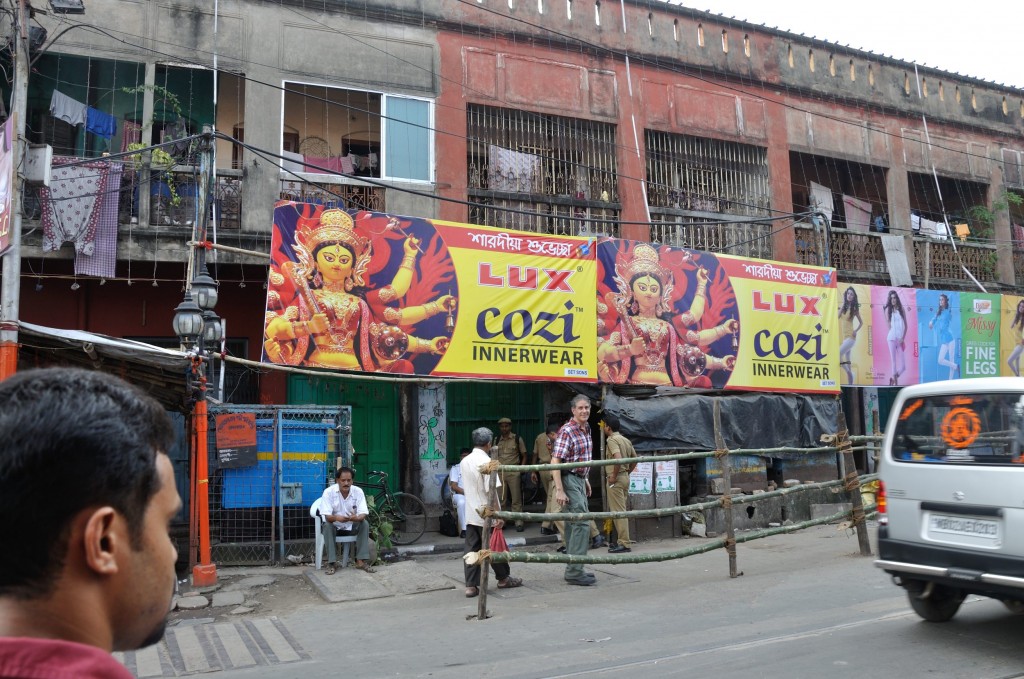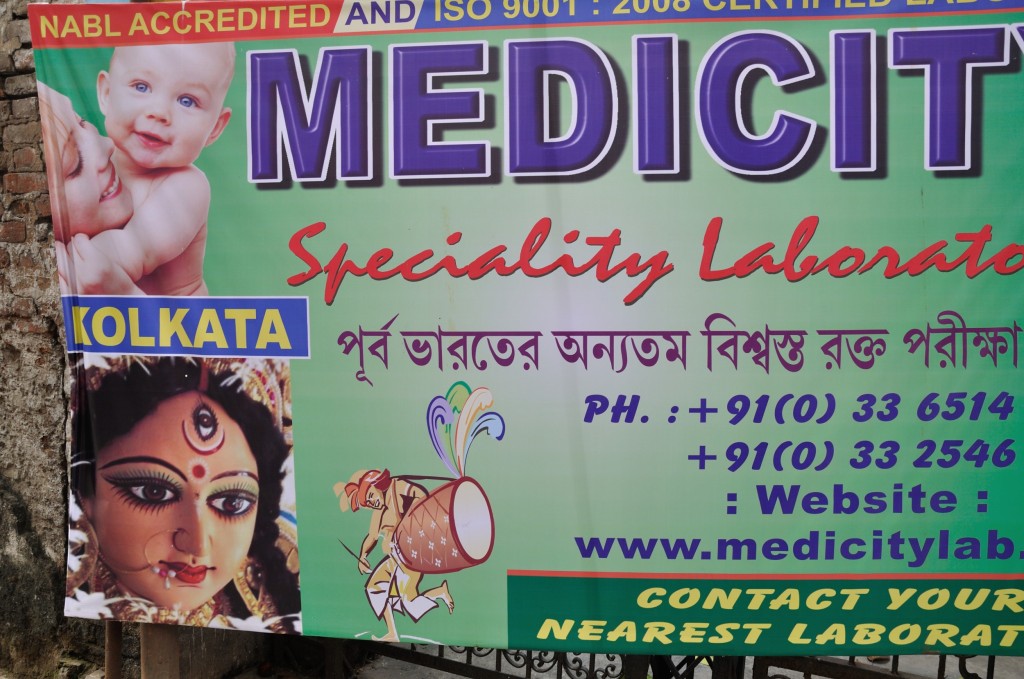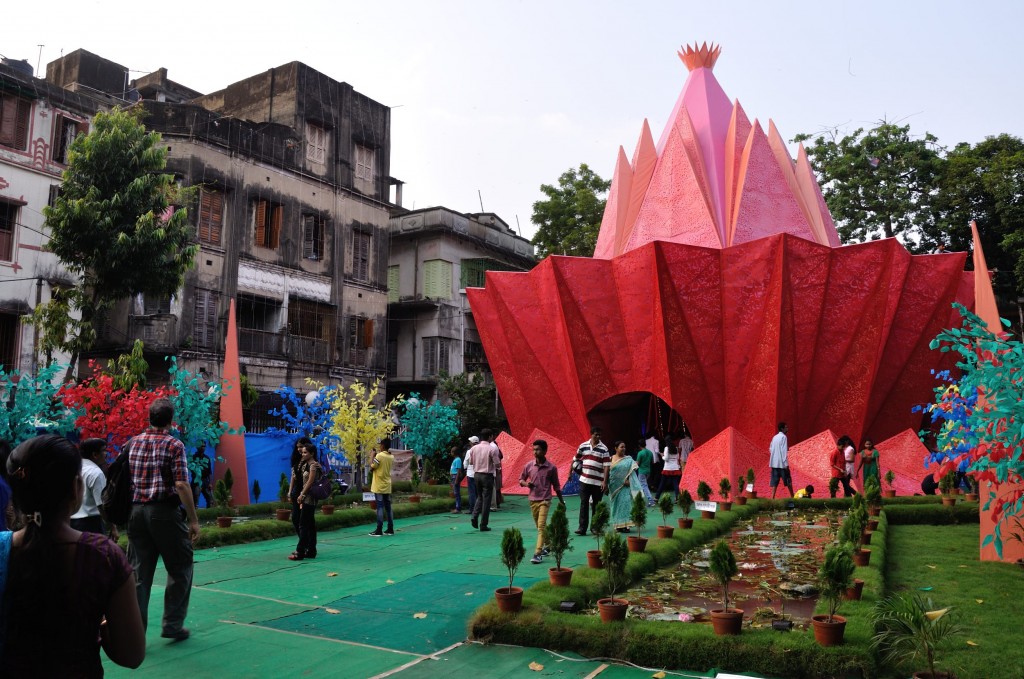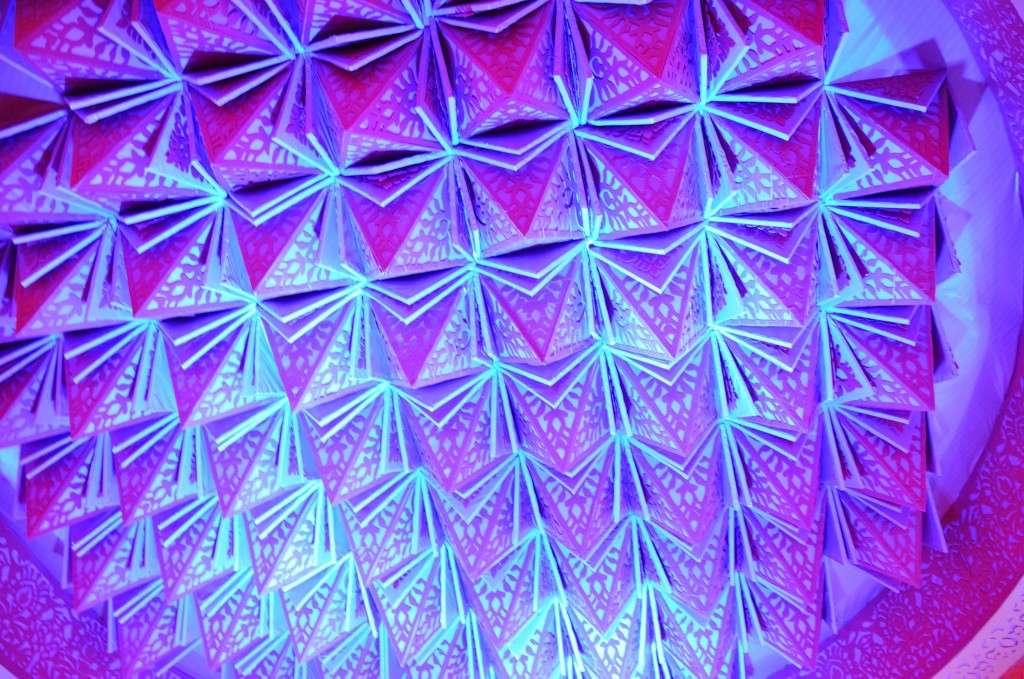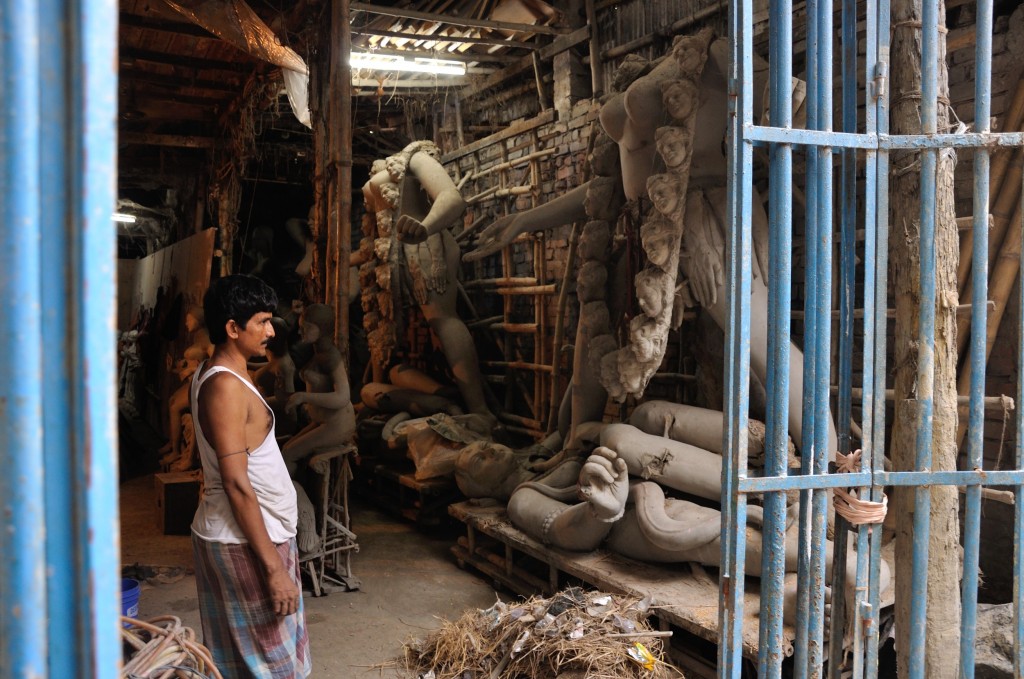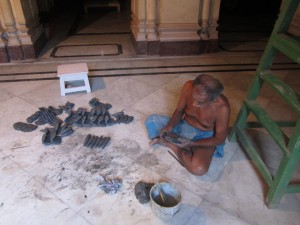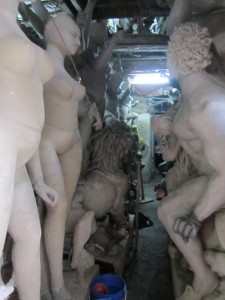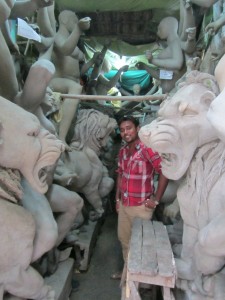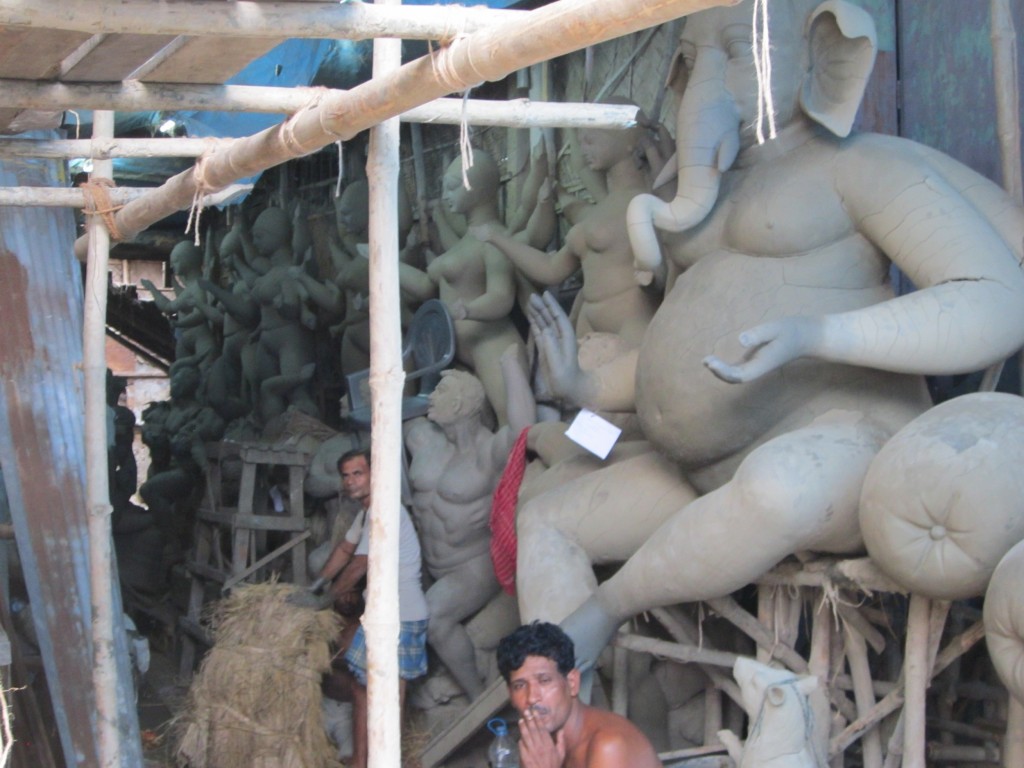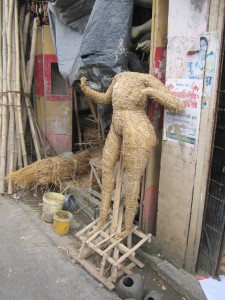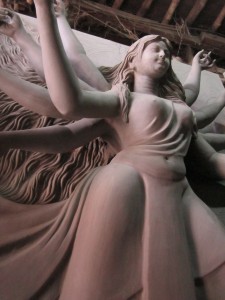This first day of Durga Puja is also known as Maha Shasthi, and during this day a series of rituals are performed to symbolically awaken Durga. For more information on the rituals of Durga Puja and their timings, check out
http://www.bangalinet.com/pujacalendar.htm or http://www.durga-pujas.com/shashti.shtml.
For today’s pandal-hopping, Stan and I decided to return to Kumartuli, particularly to view the final installation of Dilip-da’s Durga pandal at the Shovabazar Rajbari.
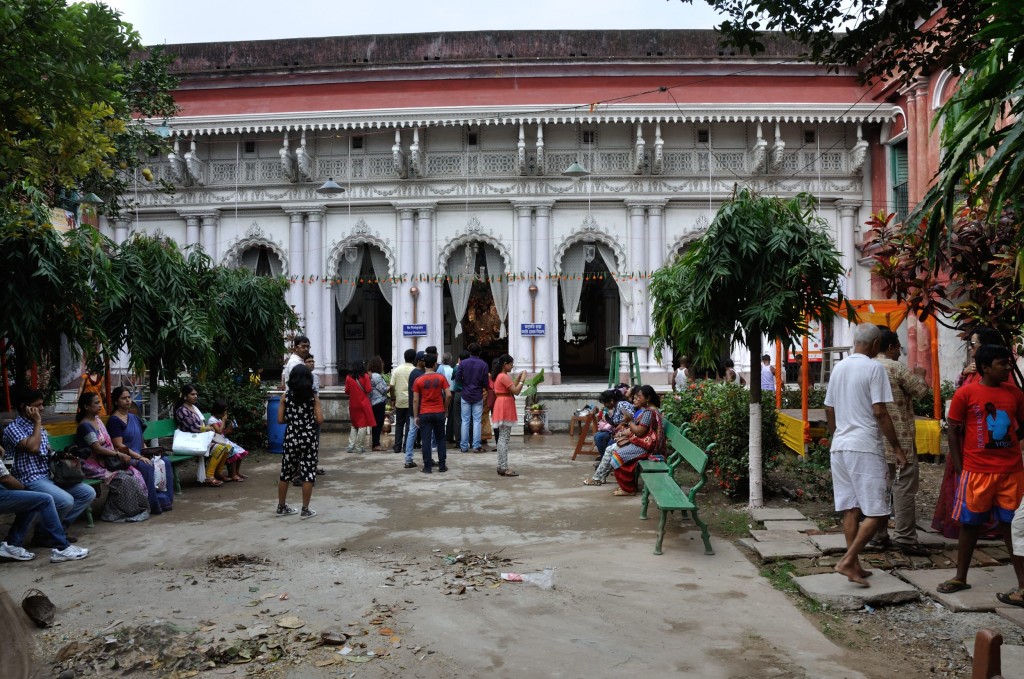 Waiting outside the Rajbari for the pandal viewing to begin later that evening.
Waiting outside the Rajbari for the pandal viewing to begin later that evening.
 First glimpse of Durga
First glimpse of Durga
 The Durga pandal with all of the clothing, headdresses, jewelry and other props, except – Durga’s hands are yet to be holding their ten weapons.
The Durga pandal with all of the clothing, headdresses, jewelry and other props, except – Durga’s hands are yet to be holding their ten weapons.
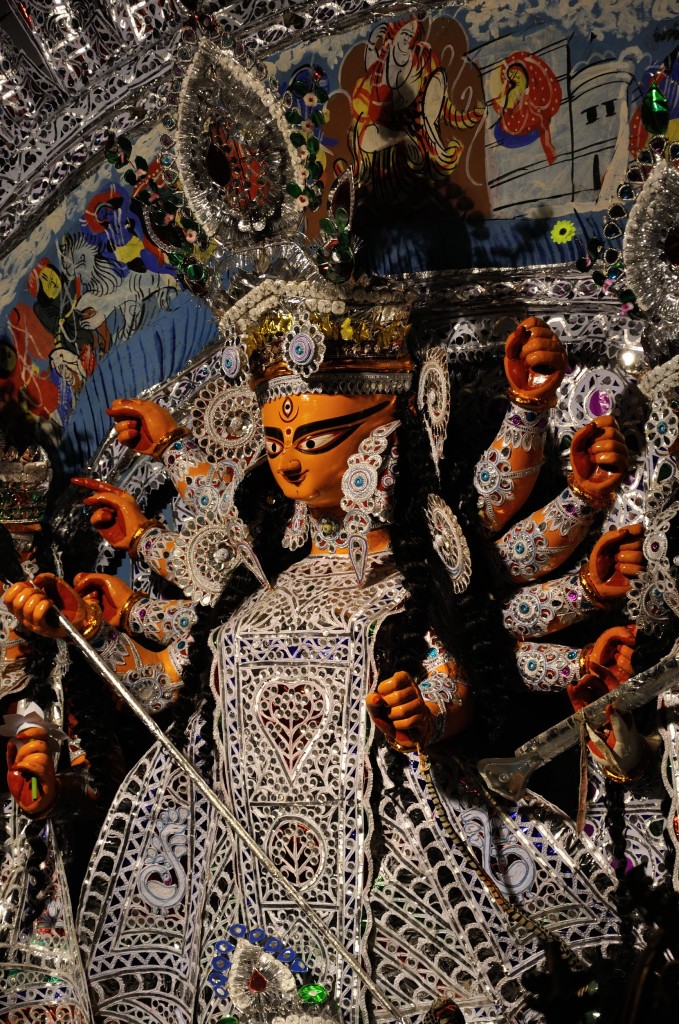 Durga
Durga
Here’s the Ganesha, side by side with his earlier photo!
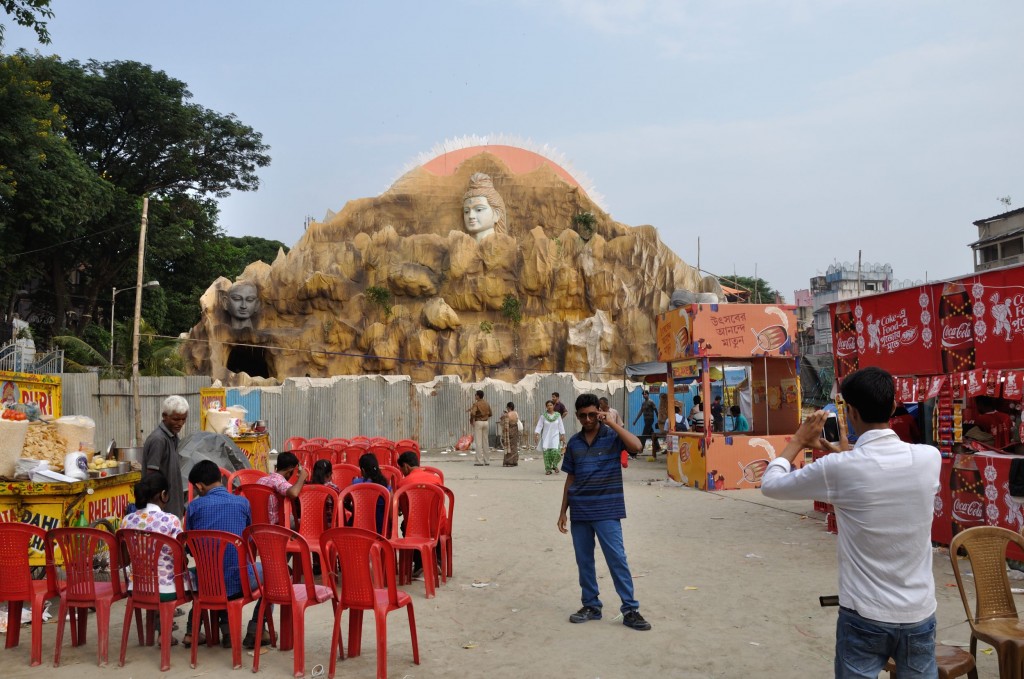 A short distance from the Shovabazar Rajbari was this mountain-themed pandal, studded with giant heads. A few close-ups follow:
A short distance from the Shovabazar Rajbari was this mountain-themed pandal, studded with giant heads. A few close-ups follow:
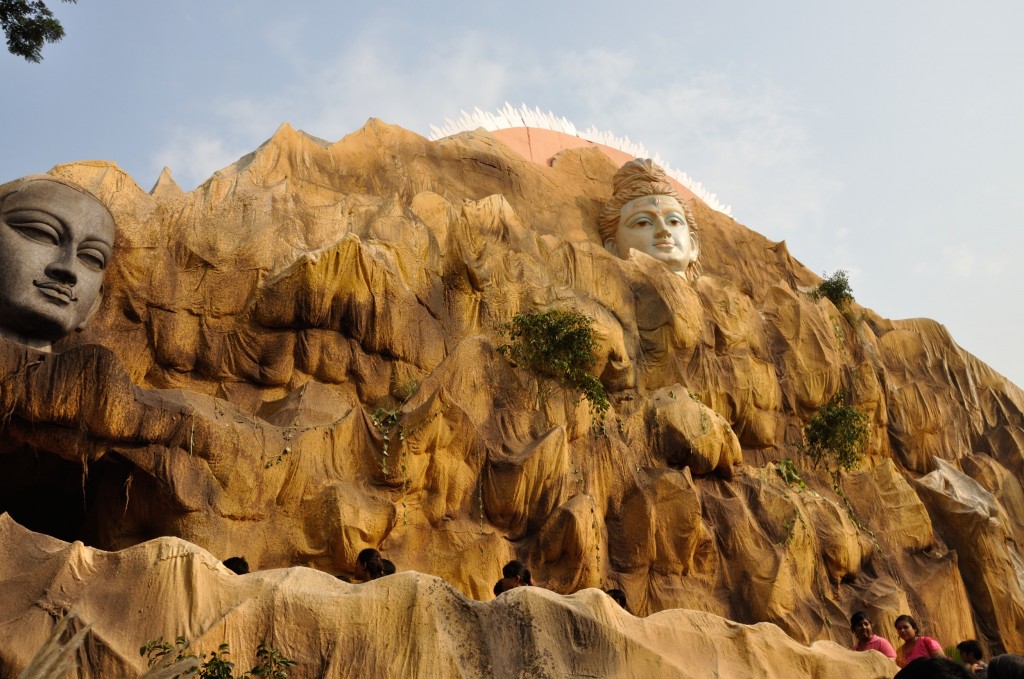
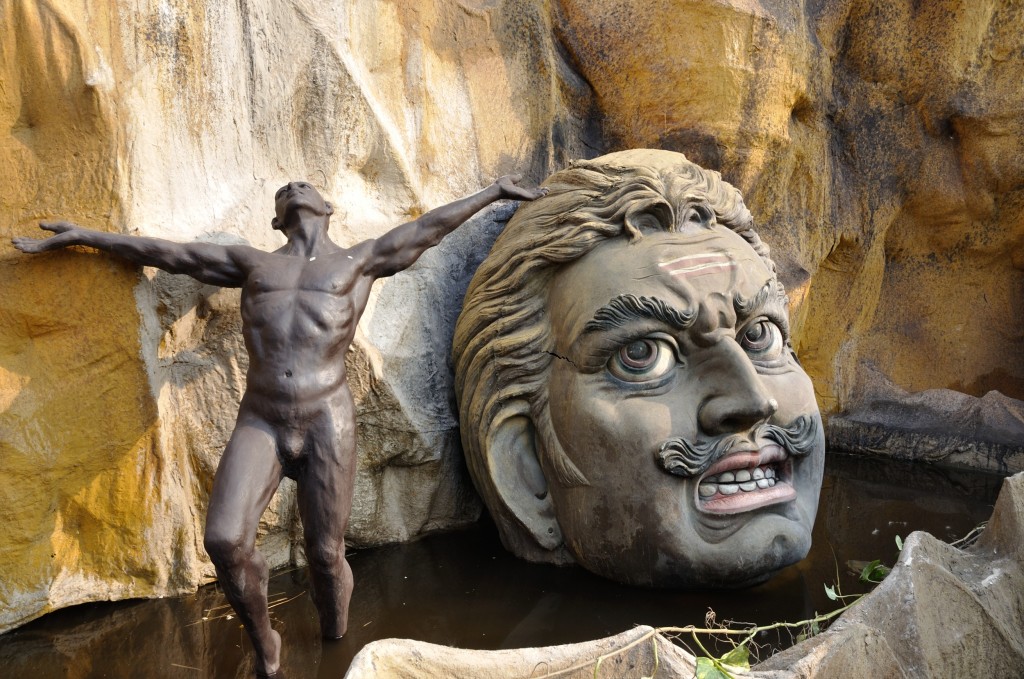
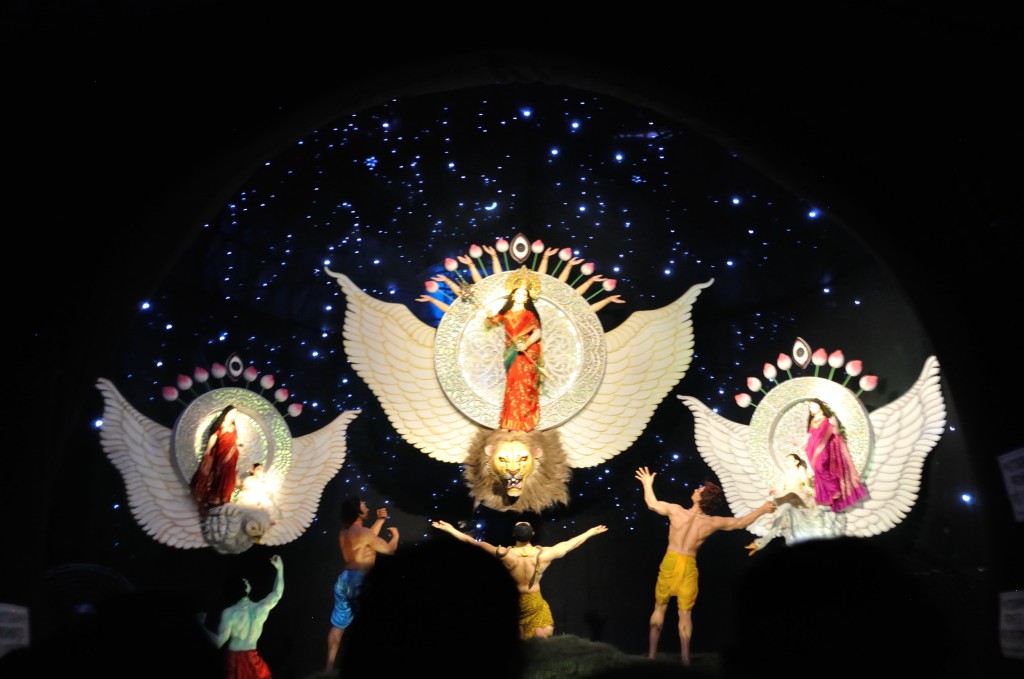
Inside, a contemporary rendition of the Durga scene using near life-sized figures (sadly, some other pandal hoppers’ heads are blocking my view of Kartik and Ganesha).
At the foot of this installation is a tiny traditional Durga pandal.

Around Kumartuli and pretty much everywhere in Kolkata, you will find advertisements using Durga to sell products and services. These photos show ads selling underwear, health care, and food.
Another lotus-themed pandal!
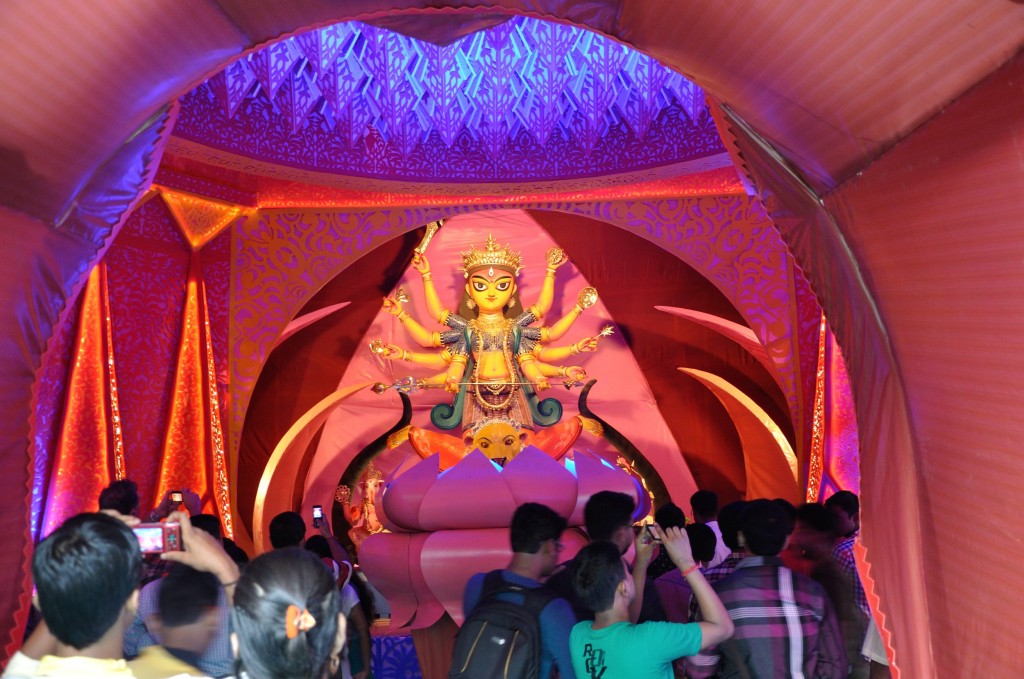
This Durga has a cartoon-character quality.
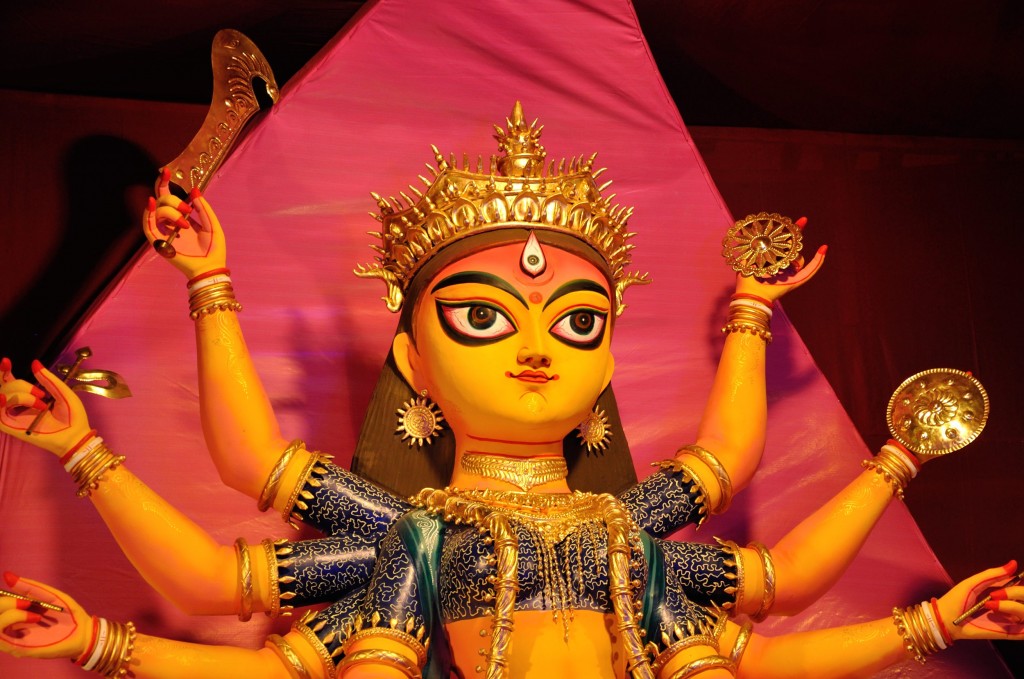

On our way back to the metro, we stopped to check out one more traditional community pandal, tucked into a lane. It was full of energetic and exuberant children! Their Durga is below.

When we peeked into some of the Kumartuli workshops, some image-makers were already hard at work on gigantic pandals for Kali Puja, which takes place in a few weeks’ time.
